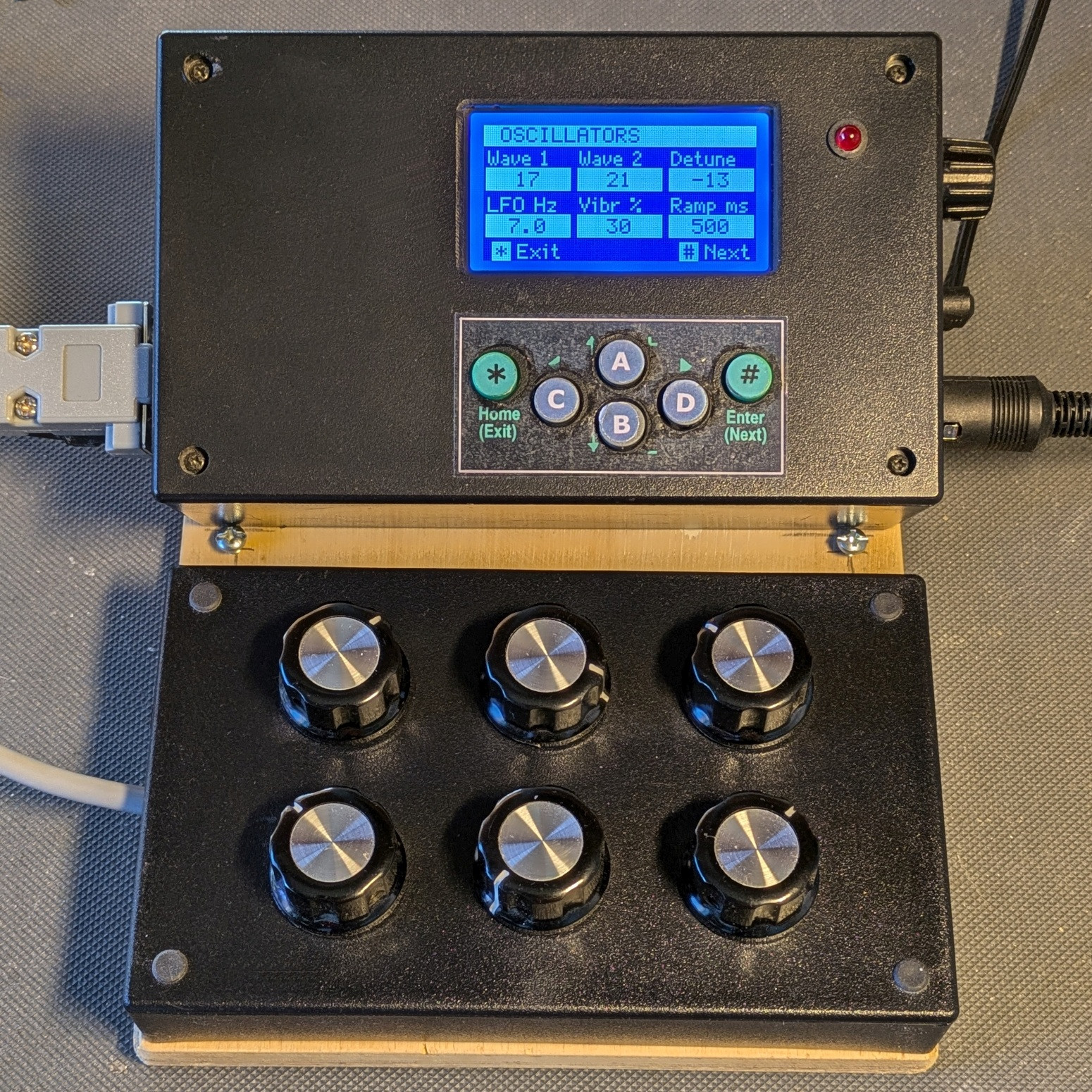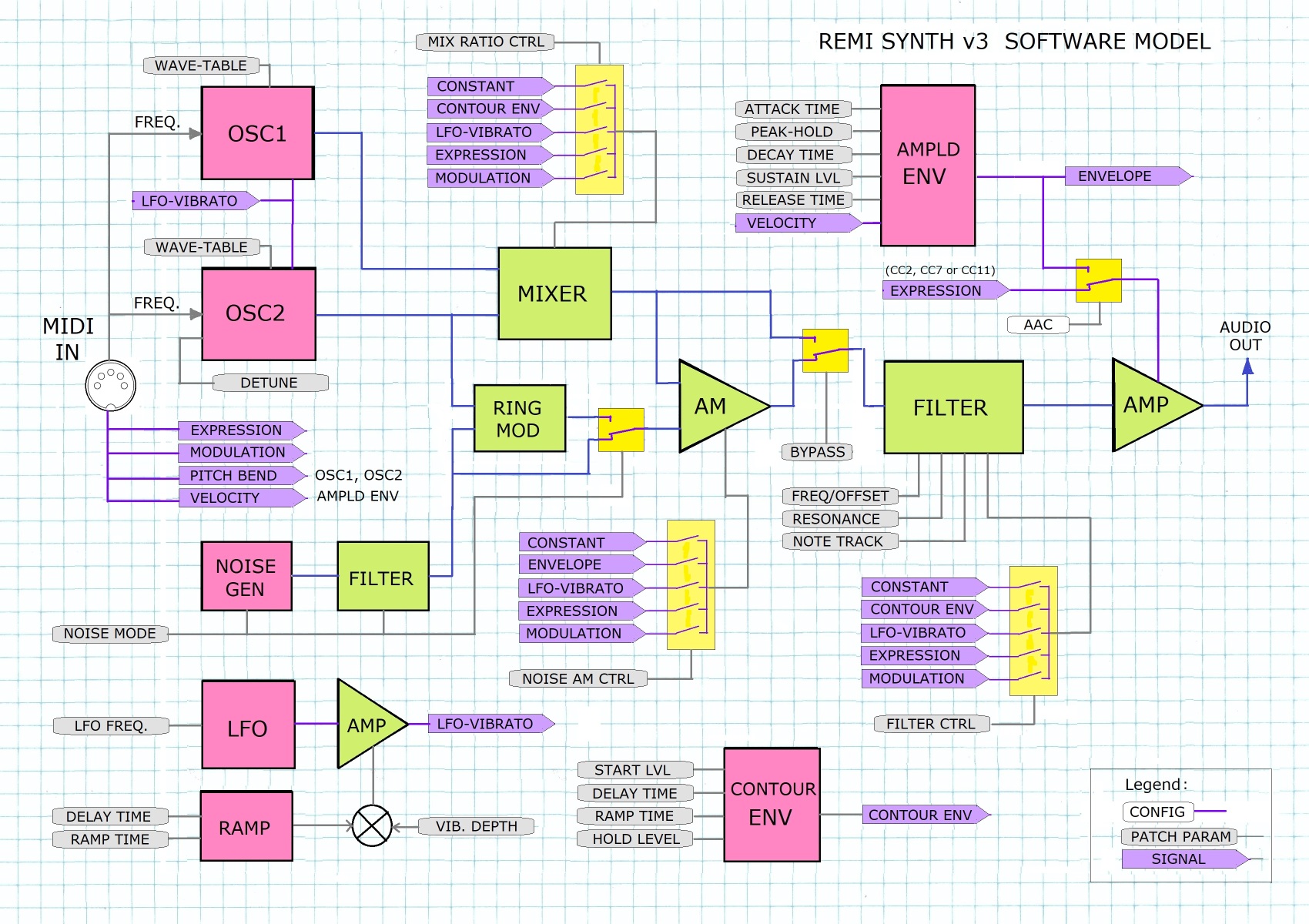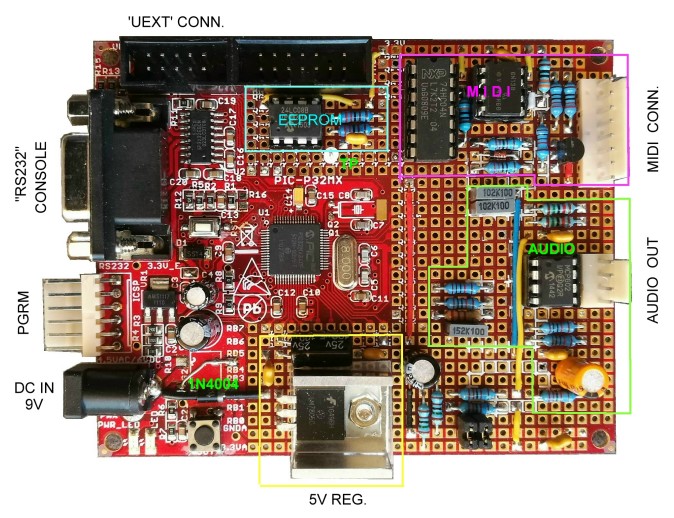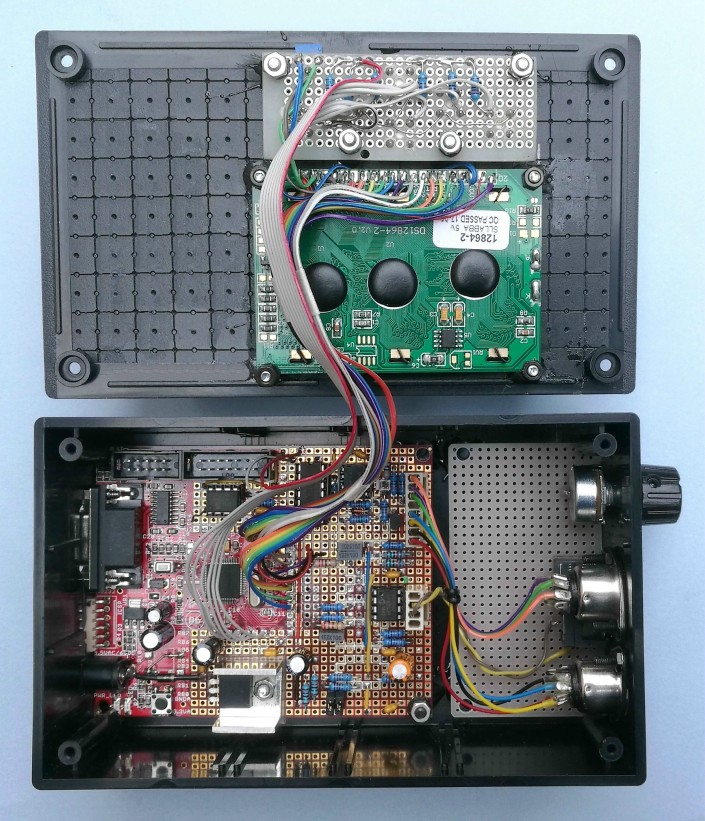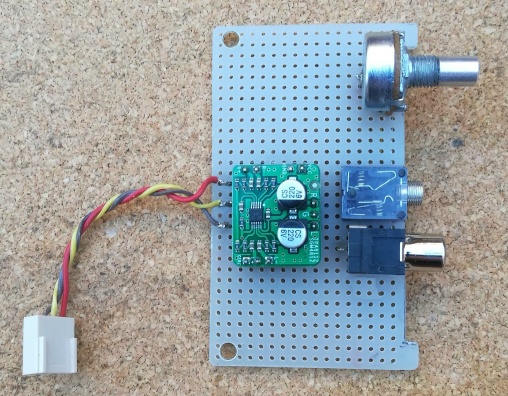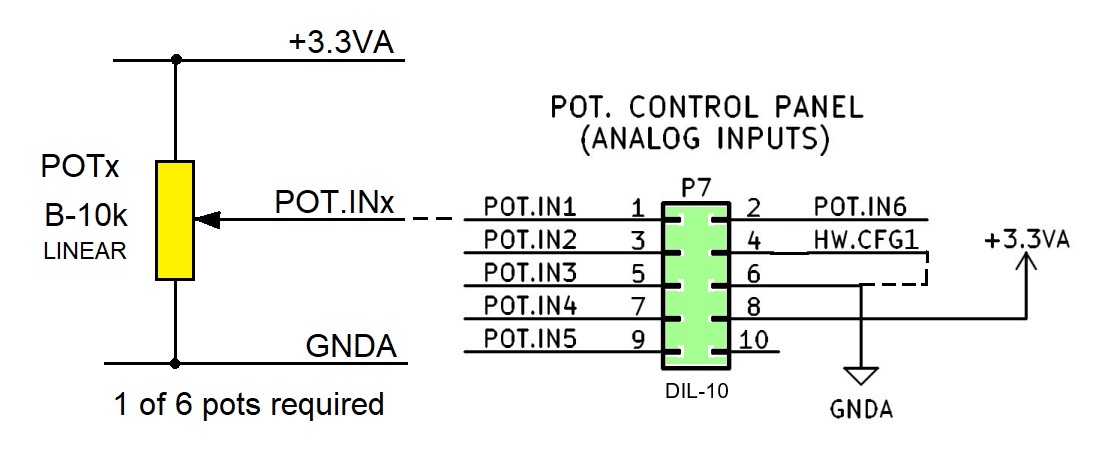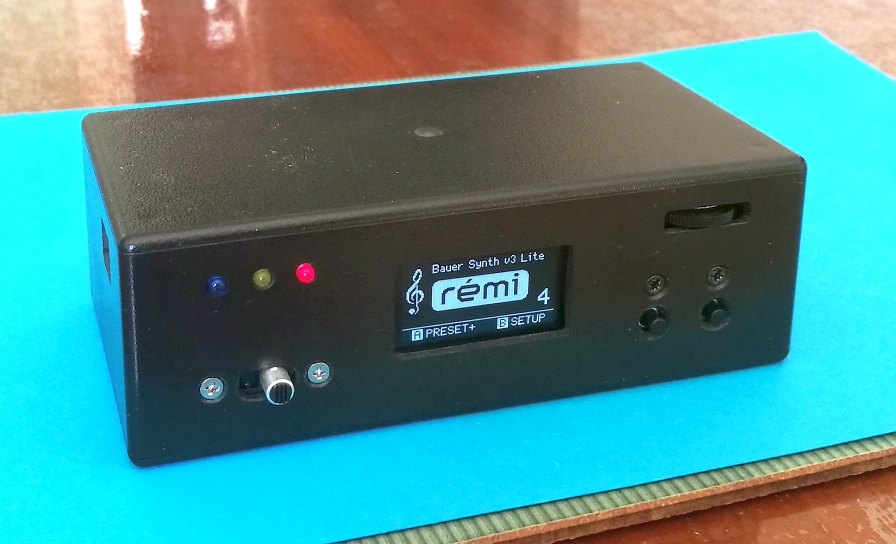|
Build the "REMI Synth" (mk2) A DIY Project by M.J. Bauer |
||||||||||||||||||||||||||||||||
This post describes the design and construction of the "second generation" (mk2) REMI synth module. There was
a "third generation" (mk3) design using an Olimex
'PIC32-Pinguino-micro' module, but the Pinguino module was discontinued
and is now
hard to obtain, so I removed the project web-page. Note that the
synth mk3 model was functionally identical to the mk2, the only
difference being the MCU. For a general introduction to the REMI EWI project, see: "Introduction to the REMI". *** New for 2025 *** An alternative digital synth design based on the Adafruit 'ItsyBitsy M0 Express' (SAMD21) MCU board... (Your comments and inquiries are welcome... email me!) +++
REMI Synth 'mk2' prototype with optional (removeable) Pot Control Panel |
||||||||||||||||||||||||||||||||
Overview The REMI Synth Module is a digital monophonic MIDI-controlled sound synthesizer intended primarily for use with electronic wind instument (EWI) MIDI controllers, in particular the REMI 2 handset. However, the synth works equally well with a MIDI keyboard or any EWI controller with a standard MIDI connection. Using a low-cost MIDI-USB adapter, the REMI Synth can also be controlled by a computer running music software, for example a MIDI sequencer or DAW (Digital Audio Wankstation). Features
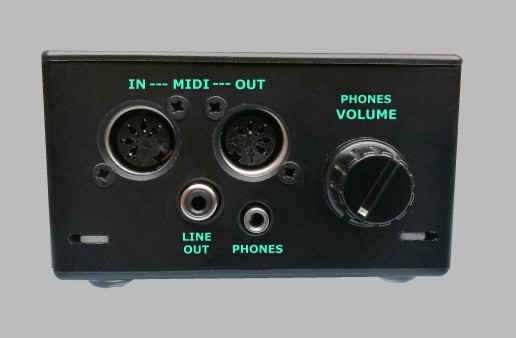 Right-hand side connector panel Synthesizer Design The REMI synthesizer is implemented almost entirely in software, requiring minimal circuitry outside of the microcontroller chip - just a low-pass filter in the audio output circuit. To generate audio tones, the synth uses a dual "wave-table oscillator" algorithm offering a variety of waveforms which can range from very simple to rich and complex sounds, some resembling acoustic instruments. A PIC32 on-chip timer module can be used to generate a PWM audio output signal. The PWM "DAC" has a resolution of 11 bits, which gives adequate sound quality. Software DSP computations use 32-bit normalized fixed-point numbers with 20-bit fractional part, allowing the application to run on 32-bit microcontrollers without hardware floating-point capability. Synth Software Model The synth model comprises a pair of wave-table oscillators which use independent wave-tables. The two oscillator outputs are fed into a "mixer" which scales and adds the two signals in a variable ratio. The mix ratio can be fixed, or it can be varied in time as the note progresses. The "contour" envelope shaper may be patched in to control the oscillator mix ratio. This capability is used to implement "waveform morphing", a technique used to vary the harmonic content of the sound with time. Waveform morphing can be used to realise a range of effects beyond what is possible to achieve with filtering techniques. The pitch of the secondary oscillator can be "detuned", i.e. increased or decreased relative to the primary oscillator. The "detune" factor is a patch parameter having units of "cents", so that the detune resolution is 1/100th of a semitone. If the detune factor is a fraction of a semitone, typically in the range 3 to 30 cents, the resulting effect is known as "Voix Celeste" (heavenly voice). This effect greatly enriches the soundscape possibilities of the synthesizer. In addition to the two wave-table oscillators, a low-frequency oscillator (LFO) is provided. The LFO can be used to modulate the audio oscillator frequency to implement vibrato, or the LFO can be used to modulate the oscillator mix ratio. In the latter case, the mixer envelope output level determines the modulation depth. The
synth can be configured to control the
amplitude (loudness) of the note-in-progress in one of two ways: The first option (1) is intended for MIDI keyboard controllers and sequencers, etc, while the second option (2) is intended for MIDI wind controllers (EWIs), in particular the REMI-2 handset. The firmware includes several "pre-defined" synth patches providing a good variety of instrument sounds. Any pre-defined patch may be assigned to any of the 8 Presets via the user interface (GUI or CLI). How the Synthesizer is Patched The REMI synth can be programmed (patched) by the user to create a new sound, without needing to modify and re-compile the firmware. Instead of using patch-cords, knobs and switches like a modular synthesizer, however, the REMI synth is patched by means of a set of numeric parameters... (see table below). A CLI command "patch" is provided for the purpose of setting patch parameter values. A user-created patch can be saved in non-volatile memory (EEPROM) for later recall. The stored "user patch" may be assigned to any of the (8) instrument "Presets". The optional "Pot Control Panel" allows immediate adjustment of patch parameters. Table 1: REMI Synth Patch Parameters
The firmware also provides a utility for users to create their own wave-tables. A CLI command "wav" is provided for this purpose. REMI synth makers who are prepared to re-compile the firmware can add their own patches and wave-tables, limited only by the amount of MCU flash program memory. CLI commands "patch" and "wav" include options to dump patch parameters and wave-table data as C source code definitions. A future firmware revision is planned to support multiple "user patch" parameter sets (stored in EEPROM). Details of REMI synth functionality and operation using the console CLI and (optional) front-panel GUI are provided in the Synth User Guide. Sample sound clips made with the REMI synth (To download a sound clip: Right-click on the name and choose 'Save Link As...') [1] To be replaced with a better clip demonstrating the synth's response to breath pressure (CC02), this sample at least gives you an idea of the sound produced with the simple "Recorder" patch. Using "additive synthesis", the wave-table was populated with harmonics present in the spectrum of an acoustic recorder. [2] In this sample, each of the two parts was played by a different REMI synth controlled by a MIDI sequencer. The bass part was produced by mixing two filtered sawtooth waves, one slightly detuned, to create a sound resembling that of a vintage analogue synthesizer. (The patch is called "Vinyl Cello".) [3] This clip was produced using PreSonus 'Studio One' DAW (Prime - free version). The lead voice is a REMI synth with the "Reeded Woodwind" patch, modified to use the Contour Envelope instead of Expression (CC02) to control wave-form "morphing". All other instrument voices were played with "Presence" - the software synthesizer incorporated in Studio One. [4] Same setup as clip #2, except the melody part comprises various "Hammond-ish" organ sounds changing during the sequence. Hammond organ sounds are easily synthesized (approximately) using wave-tables, because the organ tone-wheel mechanism is based on "additive synthesis". Accurate emulation of the Hammond tone-wheel mechanism, electronically, is not so simple. Construction Following is a description of the author's prototype as built. There is enough information given here to allow experienced electronics hobbyists and professionals to replicate the synth design. Detailed information such as step-by-step instructions, parts lists, etc, are not provided. The REMI synth hardware design is based on a PIC32-MX340 proto board made by Olimex, priced at AU$23.30 from Digikey, or €12.95 direct from Olimex. Other suppliers may still carry stock. The PCB design files may be available from Olimex on request, so you can get your own bare boards fabricated. The Olimex board has a prototyping area on which parts can be added for the MIDI IN and (optional) MIDI OUT interface circuits, PWM audio output circuitry and I2C EEPROM (24LC08). A 5V regulator (LM7805) is needed for the audio and MIDI circuits and (optional) LCD panel. A separate little proto board may be added to carry a headphone amplifier and volume control if desired. If you get your own PCB made (Olimex clone), or if you design and assemble a custom PCB, note that some of the components fitted on the Olimex board may be omitted, for example: the 'UEXT' and JTAG pin headers, 32kHz crystal (Q2), the RS232 driver/receiver IC (U2, ST3232) and DE9 connector. A USB-Serial adapter (FTDI FT232 breakout module with 3.3V I/O signals) can be interfaced directly to the MCU UART2 TX/RX pins to implement the CLI serial port. The on-board user button (BUT) and LED are also redundant. NB: The schematic shows EEPROM type 24LC64, but the firmware supports type 24LC08-B only. The complete module incorporates a front-panel user interface (GUI) consisting of a low-cost monochrome graphic LCD panel and 6 push-buttons. The LCD module and key-switches are wired directly to I/O pads on the Olimex PIC32 board. This is the quickest and easiest wiring method. (See internal view below.) NB: Provision of a front-panel (LCD module and push-buttons) is optional. The REMI synth can be operated completely with the CLI alone. The firmware adapts itself automatically if the front-panel is absent.
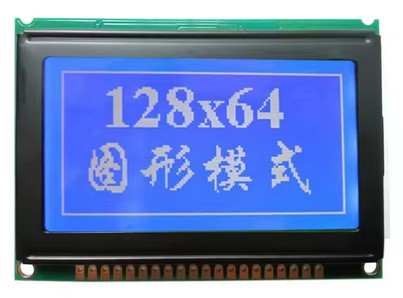
The internal view above shows the LCD panel and push-button board wired to the PIC32 MCU board. Also shown are the MIDI sockets and volume control. A pre-built headphone amplifier (breakout board with TPA6112 IC) was fitted on the prototyping board later, as shown in the photo below.
Boards are mounted on plastic spacers or standoffs. The PIC32 MCU board and audio output board are mounted on the bottom panel of the box using 20mm x M3 machine screws (countersink heads). Standoffs for the LCD module and button board are glued to the inside of the lid (with 5-minute epoxy) so that screw heads are not visible on the outside. Pot Control Panel The synth firmware supports a “Pot Control Panel” comprising 6 x 10k linear (B-10k) potentiometers connected to MCU analog inputs. Provision of a pot panel is optional and it may be implemented as a separate plug-in module which can be removed and reconnected when required, as shown in the photo at the top of the page. The prototype synth box has a DE9-P (male) connector added for this purpose. When a Pot Control Panel is connected, up to six active patch parameters can be adjusted at a time. The current values of 6 parameters are displayed on a GUI screen. The GUI incorporates four Control Panel screens, allowing all 24 patch parameters to be adjusted. Patch parameter values do not change unless their associated pot knob is moved. Refer to the Synth User Guide for details of control panel operation. The diagram below shows how the 6 pots are wired to MCU analog inputs. Pot signals POT.IN1 thru POT.IN6 are wired to ADC inputs AN0/RB0 to AN5/RB5 respectively. Jumper input 'HW-CFG1' (MCU I/O pin RB9) must be connected to GND to enable the Pot Control Panel functions in the firmware. The jumper input should be open-circuit when the pot panel is removed.
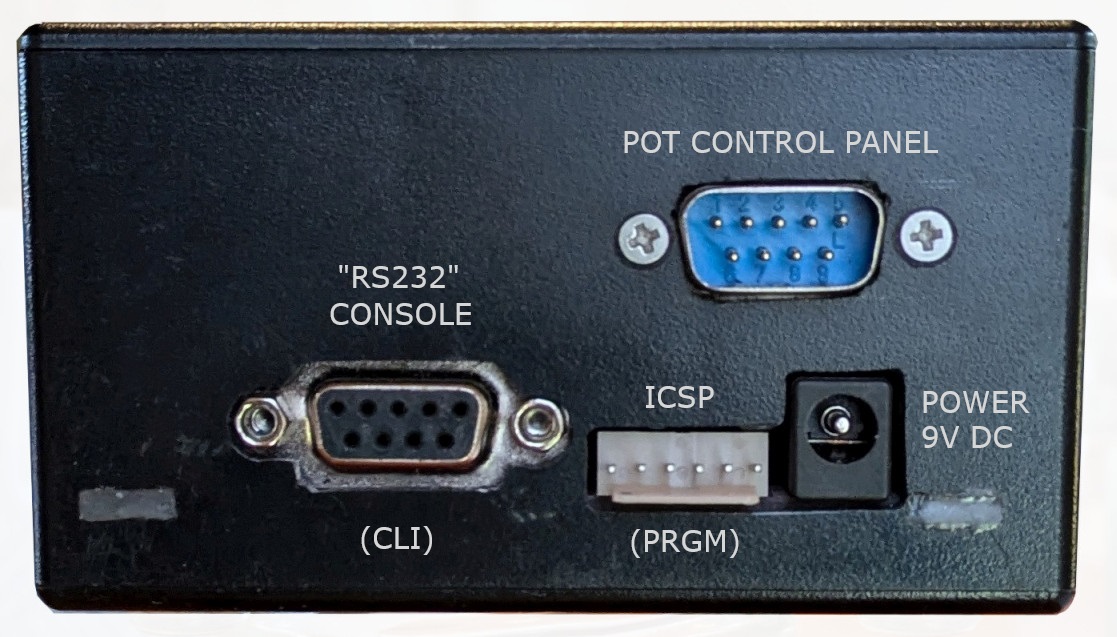 Left side panel of prototype showing modified ICSP header protruding thru a cut-out User Guide Details of REMI synth functionality and operation are provided in the Synth User Guide. ___ REMI Synth 'Lite' For REMI 2 players wanting more portability with their gear, I have designed a more compact, battery-powered sound module called the "REMI Synth Lite". Firmware REMI firmware is built using Microchip PIC development tools - MPLAB.X IDE with XC32 compiler, free to download from Microchip's website. If you intend to modify or extend the firmware, you will need these tools. Otherwise, you just need to install the PIC programmer application (IPE, included with MPLAB.X download). The latest firmware release can be found on GitHub - see link below. Programming Tool A PIC programming
tool, Microchip PICkit-3, is required to install the synth firmware. |
||||||||||||||||||||||||||||||||
If you are interested in building a REMI synth and/or EWI controller, or if you have enjoyed following the project here, kindly send me an email. Support is offerred to readers building a REMI or other device based on projects posted on this site. Last update: December 2024 MJB Electronic Projects - Index ___ |
